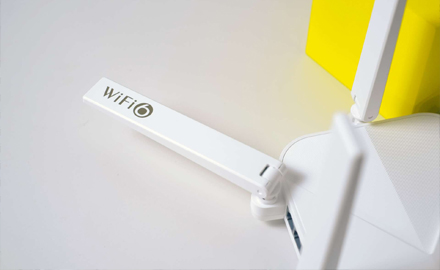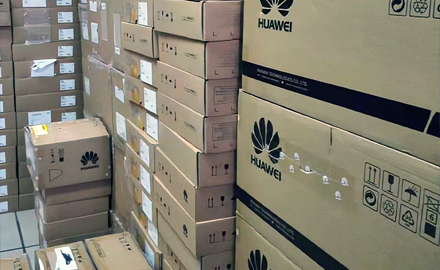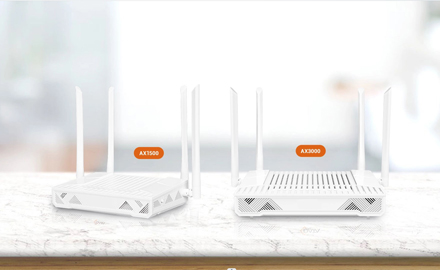With the rapid development and large-scale deployment of FTTH, the pace of optical fiber advancement and copper withdrawal and bandwidth acceleration are accelerating globally. As an important information infrastructure for the transformation of digital society, optical fiber access networks have developed rapidly driven by the broadband strategies of various countries. The number of broadband access users in China exceeded 400 million at the end of 2018, and 100M access has become popular. The popularization of broadband has greatly changed the way people live and work, and has also opened up people's imagination for more new services.
Video service has become the basic service of fixed-line broadband, replacing voice as an important source of revenue for operators, thereby stimulating the trial and deployment of 4K/8K and other services. The large traffic characteristics of video service have led to the introduction of network architecture and equipment deployment. New demands, such as equipment sinking and gradually getting closer to users, network cloudification/virtualization, home network intelligence, optical fiber getting closer to users and gradually replacing copper wires, make all-optical access a development trend.
During the construction of optical fiber access networks, small-capacity OLTs (Optical Line Terminals) have been favored by many operators for their small size, light weight, strong environmental adaptability, and low cost. Nodes are gradually getting closer to users, deployment scenarios are diversified, and the trend of providing higher bandwidth and wider resources meets the requirements for cost-effective network construction.
1. Comparative analysis of small-capacity OLT and large/medium-capacity OLT
In network construction, large-capacity OLT and small-capacity OLT have different emphasis on the selection of PON OLT. The selection needs to be based on the actual situation and network construction mode.

Table 1: Comparative analysis of large/medium capacity OLT and small capacity OLT
It can be seen that small-capacity OLT has the advantages of more flexible deployment and stronger environmental applicability, and is suitable for limited computer room space, low-density area access, OLT sinking/remote coverage, smart campus rapid access, OLT and mobile base stations Scenarios such as co-location. At the same time, it provides more flexible uplink networking and protection capabilities to ensure business security and efficient business transmission.
Small-capacity OLT can be either a 1U high pizza-box type box OLT or a 2U high compact OLT. Box-type OLT is generally a fixed device with non-pluggable line cards and low cost; while 2U high-end OLT generally has carrier-grade protection and good power supply, fan, main control board redundancy and other capabilities.
2. Analysis of small-capacity OLT application scenarios
The following will analyze the application scenarios of small-capacity OLT according to scenarios such as low-density area coverage, remote area coverage, light-asset operator applications, smart industrial parks, commercial building access and FTTM.
● Low-density area coverage
For areas with low population density, it is more suitable to use small-capacity OLT, which can save investment in infrastructure such as backbone optical fibers, pipelines and computer rooms, electricity, and air conditioning, and help operators save TCO. Combined with optical modules with large optical power budgets such as Class D optical modules, it can also solve the coverage problem for some users who are far away. In addition, small-capacity OLT is also the preferred solution for small and medium-sized operators. It adopts outdoor integrated configuration to save equipment room and supporting costs. It can be applied in various environments with harsh natural conditions to achieve rapid coverage of FTTH networks.

Figure 1: Low-density area coverage scenario
In this scenario, the number of users is sparse, and small-capacity OLT can be deployed flexibly and reduce investment.
● Coverage in remote areas
In some sparsely populated areas, network coverage faces difficulties. The distance between the central node and the remote node is long, line resources are scarce, there are many intermediate nodes, many joints, and the lines are complex. By adopting a small-capacity OLT deployment solution, it covers many users and is low-cost, making it a cost-effective solution.
In this case, POP points are generally set up remotely, and small OLTs are deployed in outdoor integrated configurations to save computer room and supporting costs. Multiple small-capacity OLTs are aggregated to large OLTs or aggregation switches in the central computer room. OLTs are configured on demand 10/ The 40/80km optical module uses Ethernet GE or 10GE interface connection, and the OLT uses a high-density PON interface board to cover many users and is suitable for scenarios where the remote end has a certain user scale and business potential.

Figure 2: Coverage scenario in remote areas
In this scenario, rural users are far away from the central computer room in the city, and the cascade networking of large-capacity OLT and small-capacity OLT can achieve broadband access in remote areas.
● Asset-light operator applications
At present, there are still many mobile or government-enterprise transformation operators who do not have their own fixed computer rooms and fiber optic resources. They rent the resources of large fixed network operators to provide home broadband and enterprise dedicated line services. They pay more attention to cost, and cost-effective small-capacity OLT has become the first choice. Small-capacity OLT occupies a small space, has low equipment power consumption, and has a high density of single-board PON ports, which reduces the requirements for computer room space, indoor cabinets, power supplies, and air conditioners, saves investment in backbone optical fibers, pipelines, and infrastructure such as computer rooms, electricity, and air conditioners, and helps operations Business owners save TCO.

Figure 3: Application scenarios of light asset operators
In this scenario, customers are cost-sensitive and have low bandwidth requirements. It is easy to save initial investment by deploying small-capacity OLT and meet customers' needs for rapid deployment and flexible expansion.
● Coverage of smart industrial parks and commercial buildings
In recent years, in the construction of campus networks, POL (Passive Optical LAN) solutions have increasingly become the first choice for customers, and the construction of all-optical campus networks has become a consensus in the industry. Compared with traditional Ethernet LAN, POL has the characteristics of high security, low energy consumption, long distance, long life, simplified network and centralized operation and maintenance. Based on long-term investment and technology accumulation in developing PON access networks in the home broadband market, operators actively promote the construction of park POL networks. Small-capacity OLT is small in size, flexible in installation, and meets basic customer needs such as security and easy maintenance. It also has many new skills such as low-latency PON, 5G integration, etc., and occupies an important position in POL network construction.

Figure 4: Smart industrial park and commercial building coverage scenarios
Smart industrial parks involve a variety of broadband access scenarios, such as office buildings (enterprise POL), hotels (high-speed bandwidth access), factories (industrial Internet), and monitoring (parking access), etc.
Especially in independent multi-tenant commercial buildings, each tenant requires separate broadband access, which is convenient for enterprise users to rent OLT independently and has high security.

Figure 5: Independent multi-tenant commercial building scenario
In this scenario, a small-capacity OLT can be deployed in the basement of a commercial building. For enterprise users occupying multiple floors, a separate OLT can be allocated; for enterprise users on a single floor, multiple PON ports can be allocated; for multiple enterprise users sharing the same floor, multiple ONUs can be allocated.
●Fixed-mobile convergence scenario
In the usual fixed-mobile convergence (FMC) scenario, mobile operators use existing backhaul network resources and computer room cabinet space to build FTTH networks to realize the transformation from mobile operations to full-service operations. Small-capacity OLTs can co-locate and share cabinets with base stations, and deploy short-distance home optical fibers to provide home network coverage, achieving rapid deployment and rapid service provisioning, thereby shortening ROI.

Figure 6: Fixed-mobile convergence scenario 1
On the other hand, traditional mobile bearer networks often require a heavy workload, high investment, and long construction time. If the idle ports and optical fiber resources of the equipment in the deployed FTTx network are used, as well as GPON and 10G PON to provide high-bandwidth channels, and the time and clock synchronization mechanism of the PON system itself are used to provide mobile bearer, the resource utilization of the existing FTTx network can be improved. Small-capacity OLT has the characteristics of small size, flexible deployment, and low cost. It is also convenient for sharing resources such as computer rooms/racks/cabinets with mobile devices, reducing mobile network construction costs.
 The Difference Between AX1800 ONU and AX3000 ONU
The Difference Between AX1800 ONU and AX3000 ONU
 How are Huawei OLTs Classified?
How are Huawei OLTs Classified?
 The Future Trend of Optical Line Terminals (OLTs)
The Future Trend of Optical Line Terminals (OLTs)
 The Difference Between ONU and ONT
The Difference Between ONU and ONT